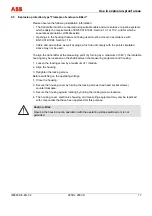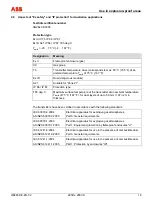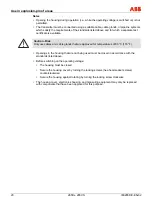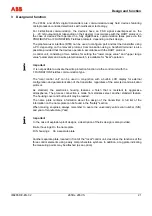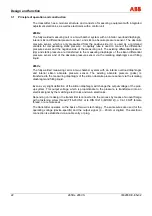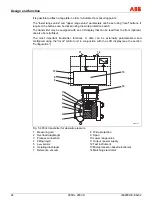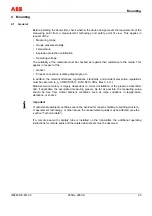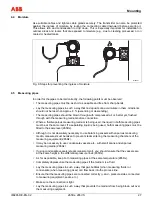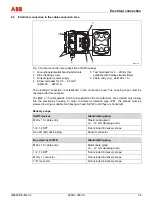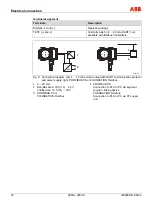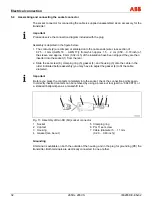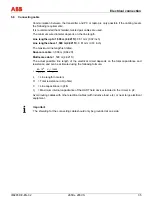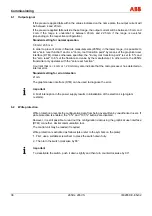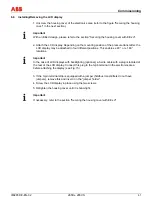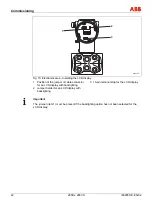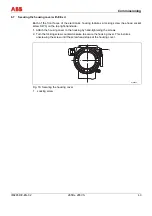
Electrical connection
28 265Dx,
265VS
IM/265D/V-EN-02
Pos: 13.1 /Überschriften/1/D - F/Elektrischer Anschluss @ 0\mod_1140620471687_3101.doc @ 3143
5 Electrical
connection
Pos: 13.2 /Elektrischer Anschluss/Allgemein/Hinweise zum elektrischen Anschluss @ 3\mod_1157535005078_3101.doc @ 39554
Warning - General risks
Observe the applicable regulations governing electrical installation. Connections must only be
established in a dead-voltage state. Since the transmitter has no switch-off elements,
overvoltage protection devices, lightning protection, and voltage separation capacity must be
provided at the plant (overvoltage/lightning protection is optional).
Check that the existing operating voltage corresponds to the voltage indicated on the name
plate.
The same lines are used for both the power supply and output signal.
Pos: 13.3 /Überschriften/1.1/1-spaltig/A - C/Anschluss des Kabels @ 1\mod_1147680358312_3101.doc @ 10979
5.1
Cable connection
Pos: 13.4 /Elektrischer Anschluss/Druck/Druckmessumformer/Druckmessumformer 265Dx, 265Vx/Anschluss des Kabels @ 5\mod_1164013738140_3101.doc @ 48748
Depending on the design supplied, the electrical connection is established via a cable entry,
M20 x 1.5 or 1/2-14 NPT thread, or Han 8D plug (8U) (PROFIBUS PA and FOUNDATION
Fieldbus: M12 x 1 or 7/8 plug).
The screw terminals are suitable for wire cross sections of up to 2.5 mm
2
(AWG 14).
Important
With Category 3 transmitters for use in "Zone 2", the cable gland must be installed by the
customer (see the section "Use in explosion-proof areas"). An M20 x 1.5 thread is located in
the electronics housing for this purpose.
For transmitters with "Flameproof enclosure" (EEx d) type of protection, the housing cover
must be secured using the locking screw (Fig. 14).
For transmitters that conform to the "Canadian Standards Association (CSA) Explosion-Proof"
type of design, the following should be noted when establishing an electrical connection via a
cable thermowell:
The cable thermowell must be screwed in using a suitable sealing medium in order to ensure
the applicable type of protection (type 4X, IP 67). The screw plug that is already screwed in
must be sealed at the plant using Molykote DX. The installer assumes responsibility for any
other type of sealing medium used.
At this point, we wish to draw your attention to the fact that increased force will be required to
unscrew the housing cover after an interval of several weeks. This is not caused by the
threads, but instead is due solely to the type of gasket.
Pos: 13.5 /======= Seitenumbruch ======== @ 0\mod_1126532365768_3101.doc @ 3830
Содержание 265DS
Страница 87: ......




